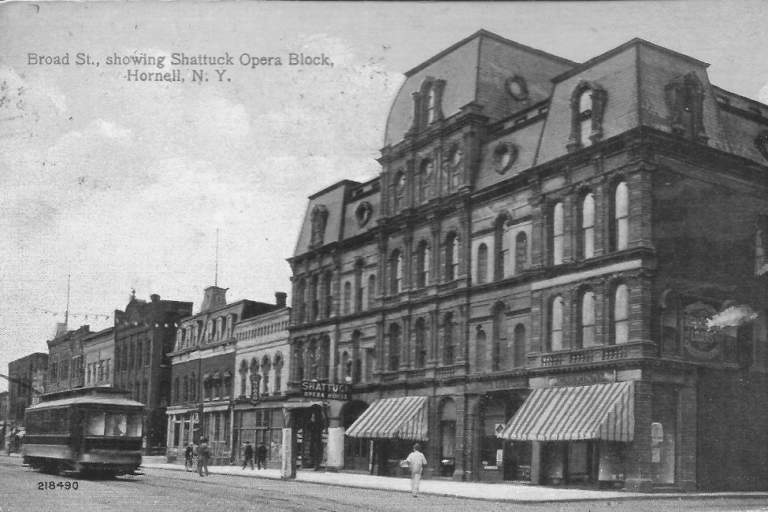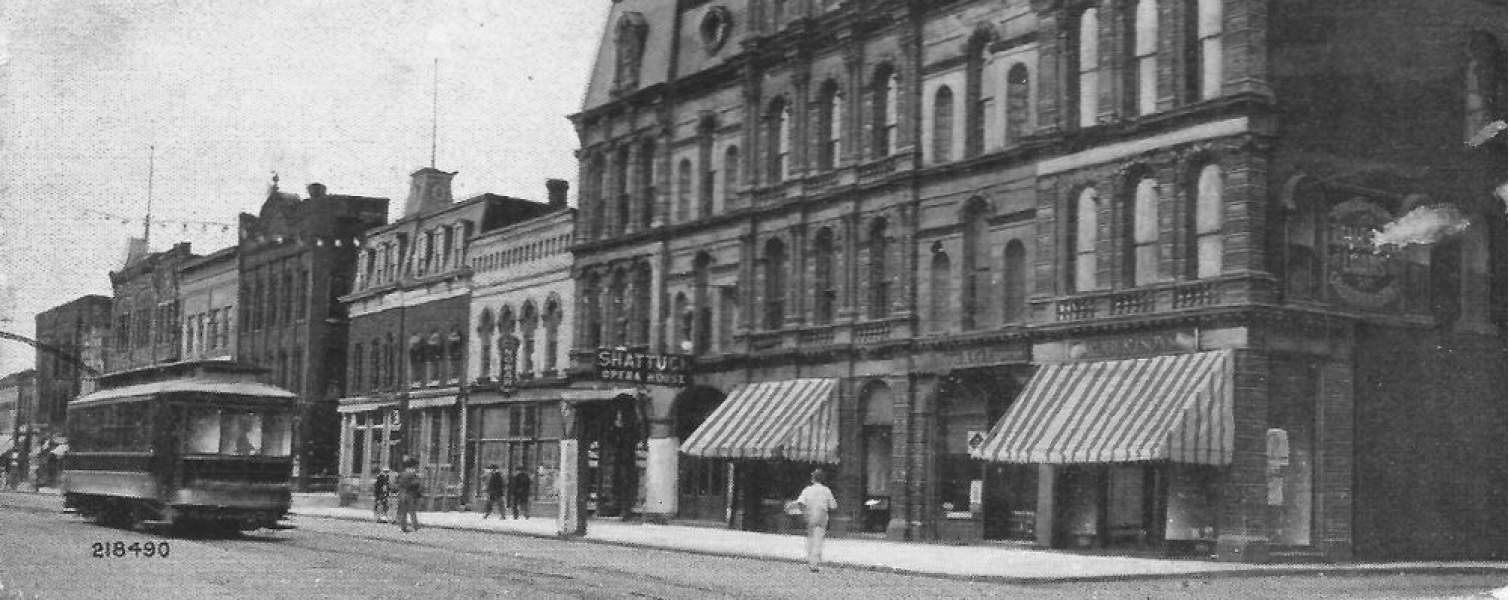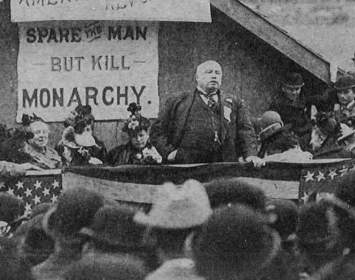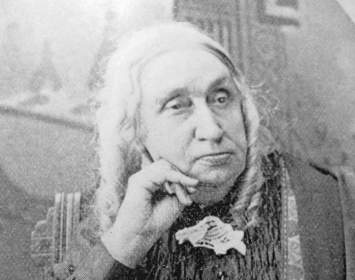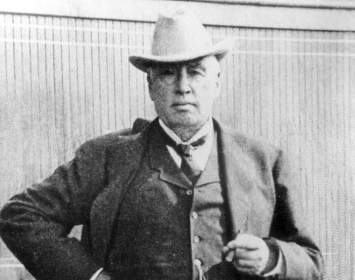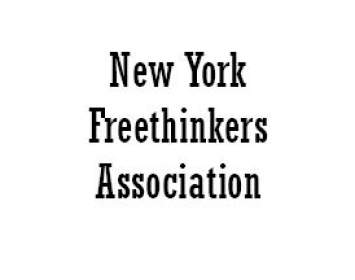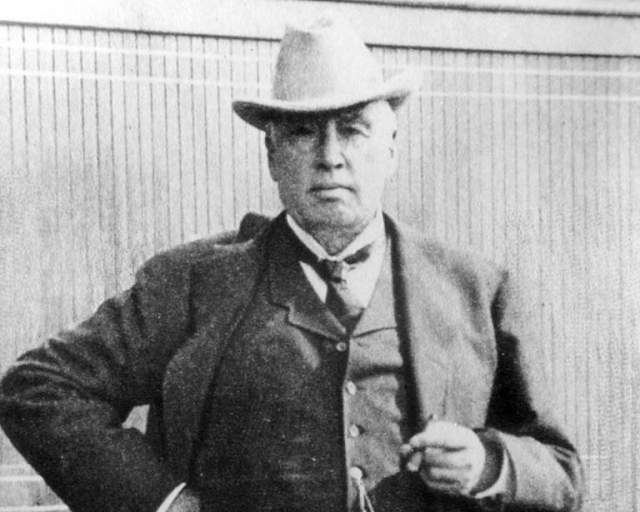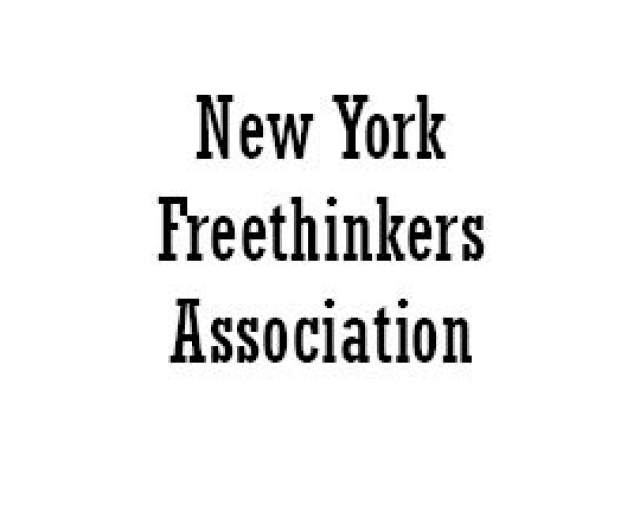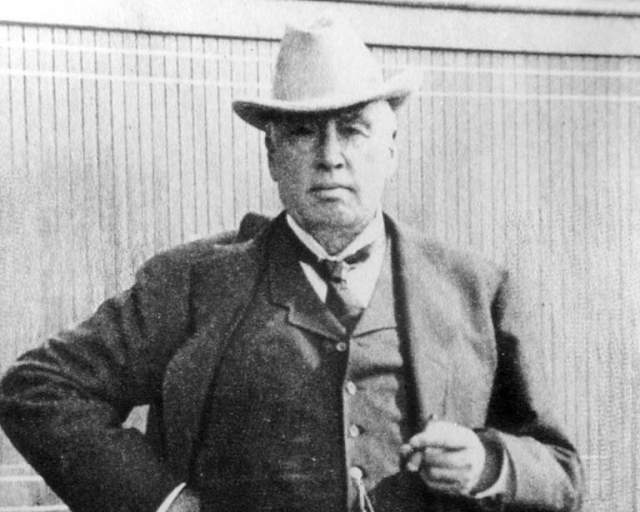The Shattuck Opera House was Hornell's largest auditorium during the late nineteenth century and the site of several significant freethought events, including two national freethinker conventions and three lectures by agnostic orator Robert Green Ingersoll.
Ingersoll lecture. On September 24, 1879, Ingersoll delivered "The Mistakes of Moses," one of his most popular and controversial lectures on religion, at the Shattuck.
The New York Freethinkers Association, despite its name a national organization, held its fourth annual convention at the Shattuck in Hornellsville on September 2–6, 1880, and again held the fifth convention on August 31–September 4, 1881. In both years, opera house proprietor Sewell E. Shattuck, an open freethinker, donated the use of his facility at no charge.
Fourth Annual Freethought Convention, Including Ingersoll Lecture. The 1880 convention was described by the New York Times as "the largest and most important convention of the kind ever held in the country." Attendance was roughly evenly divided between materialists (who today might be called atheists) and spiritualists, with whom freethinkers of the time made common cause because both opposed Christian orthodoxy. Speakers included Ingersoll, who delivered his controversial freethought lecture "What Must We Do to Be Saved?", and others.
Fifth Annual Freethought Convention. The New York Freethinkers Association met again at the Shattuck on August 31–September 4, 1881. Compared to the 1880 convention, the 1881 event was smaller: about 275 persons attended most of the sessions, with 500 present for the closing session.
Final Ingersoll Lecture. On May 5, 1894, Ingersoll made his final appearance at the Shattuck. Scheduled to deliver the patriotic lecture "Lincoln," instead he yielded to requests from the crowd and reprised "What Must We Do to Be Saved?," the hard-hitting freethought lecture he had presented at the 1880 convention.
The Building and Site. The Shattuck Opera House was erected in 1873 by Sewell Shattuck, a physician and surgeon whose practice focused mostly upon dentistry. It was one of the largest concrete structures erected in south-central New York State to that time. The building was 100 feet long, 60 feet deep, and 43 feet high with four stories. The auditorium occupied the building's third floor and offered 1,357 seats, making it Hornellsville's largest auditorium, eclipsing the previously erected Metropolitan Hall.
By 1914, the Shattuck had converted to exhibiting motion pictures. By 1926, it was known as the Shattuck Theatre. It closed in 1930. It was sold in 1940 and subsequently demolished. A one-story building was erected that occupied part of its site.
Today the Shattuck's location is remembered informally by Opera House Lane, a walkway following the site of a former street. Once a pedestrian walkway off Broadway Mall (the former Broad Street) that included a small veterans' park, the Shattuck's site is now fenced off. The fate of the veterans' park is unknown. The fenced-off area serves an adjacent tavern as an outdoor seating area.
Many thanks to Alice Taychert of the Southern Tier Library System for research assistance.
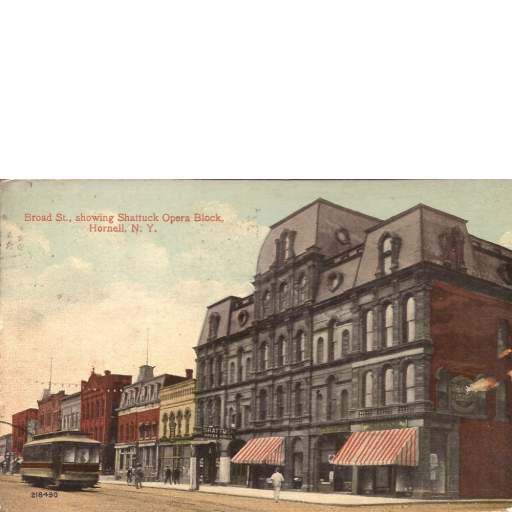
Shattuck Opera House, Hornellsville
Colored postcard view of the Shattuck Opera House (at right). Late nineteenth-century Hornell had streetcar service running down the center of Broad Street. Image courtesy Southern Tier Library System.
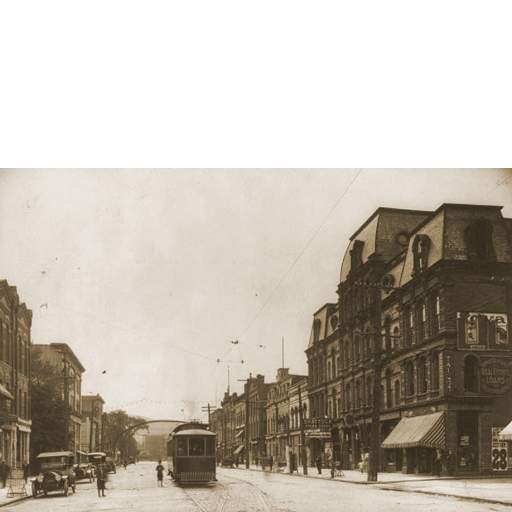
Shattuck Opera House
Alternate view of the Shattuck Opera House. Image courtesy Southern Tier Library System.
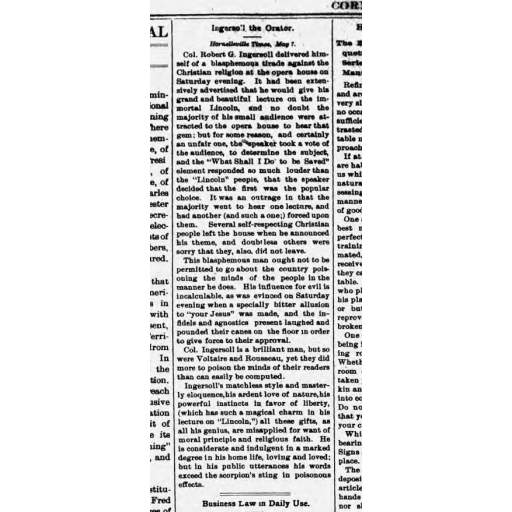
News Clipping about 1894 Lecture
On May 9, 1894, the Corning Journal reprinted a May 7 account from the Hornellsville Times of Ingersoll's polling the audience, then delivering a freethought lecture in place of the patriotic oration that had been advertised.
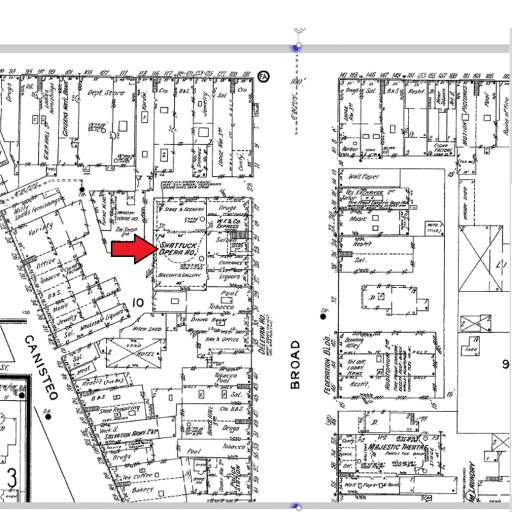
Shattuck Opera House location
Period fire insurance map shows location of the Shattuck (red arrow). The unmarked street running across top of the map is Main Street. Image courtesy Southern Tier Library System.
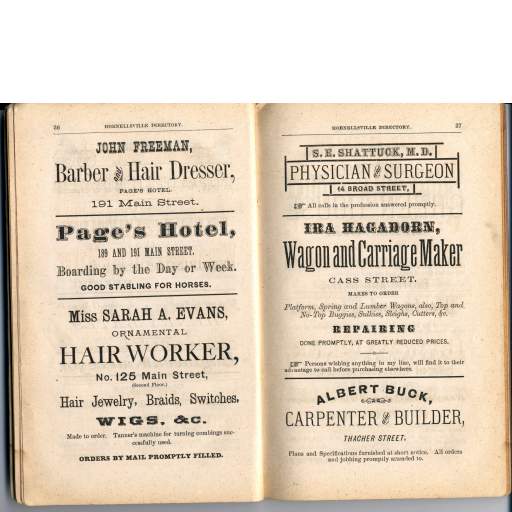
Shattuck Medical Practice Ad
Page from an undated late nineteenth century Hornellsville city directory includes an ad (at upper right) for Dr. Sewell E. Shattuck, whose surgical practice was apparently located in the Shattuck Opera House building. Other sources describe Shattuck as a dentist; it was not uncommon at the time for one individual to practice both medicine and dentistry. Image courtesy Southern Tier Library System.
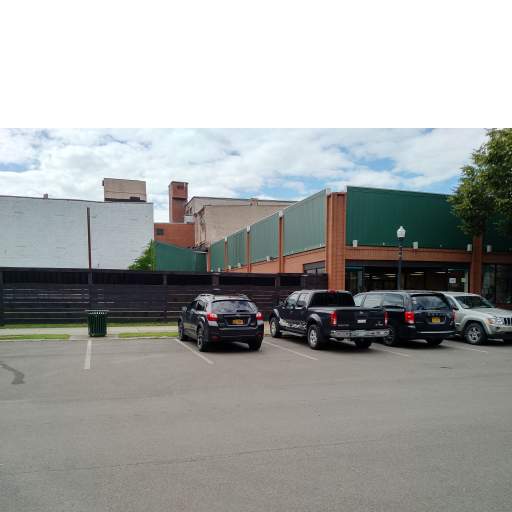
Former Opera House Lane
Until recently, Opera House Lane was a pedestrian walkway that passed alongside the red-brick structure at right. It has been fenced off to serve as an outdoor seating area for a nearby tavern. This view looks west-northwest from across Broadway Mall.
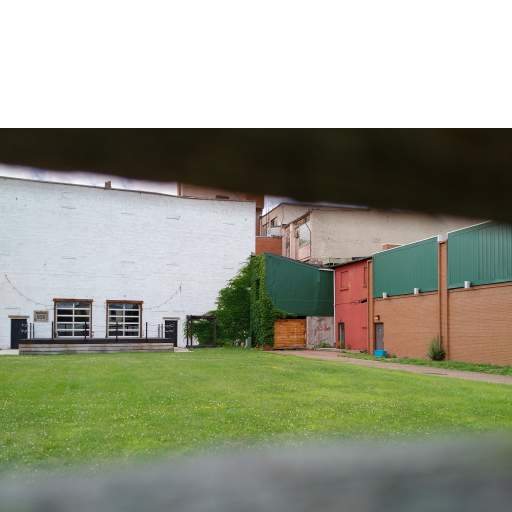
View Through the Fence
Viewed through a gap in the fence, the grassy area includes part of the former Shattuck Opera House's footprint. The fate of a small veterans' park that occupied this space until very recently is unknown.
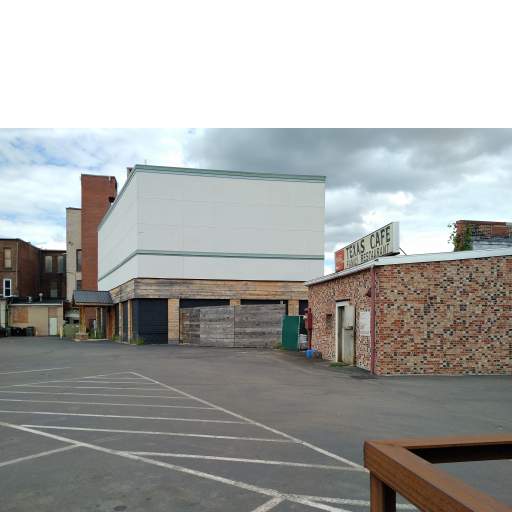
Reverse View, Former Opera House Lane
This view looks north-northeast from Seneca Street at a mid-block public parking area located behind the Shattuck site. The wooden fence at center marks the far end of the former Opera House Lane; the unmarked multi-story building behind it houses the tavern, which has fenced the area for outdoor seating.
Associated Causes
Associated Historical Events
Fourth New York Freethinkers Association Convention
September 2–6, 1880
Fifth New York Freethinkers Association Convention
August 31–September 4, 1881
